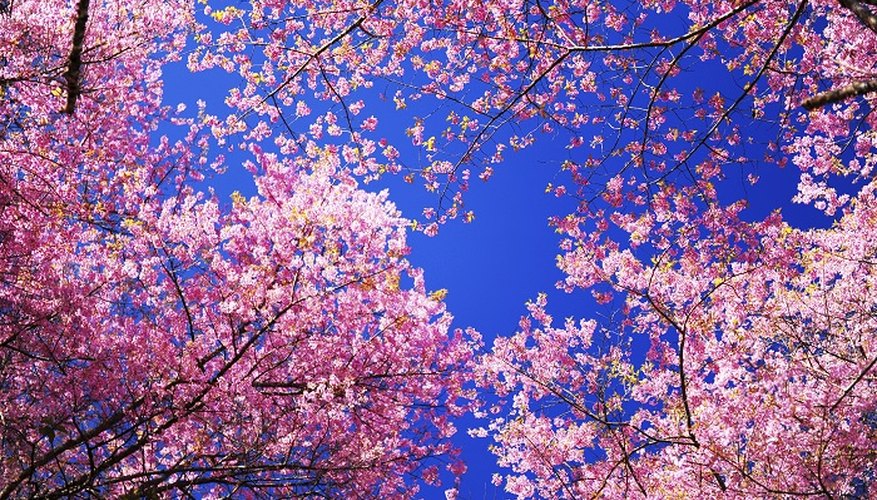Flowering cherry trees are known for their spring blossom and flowers rather than the fruit they bear. The life expectancy of the trees varies by variety, as well as growing and climate conditions. Average life expectancies assume adequate moisture, normal conditions and no environmental damage.
Growth rate
Flowering cherry trees grow quickly compared to many other species of trees. The Japanese flowering cherry grows about 30 cm per year for the first 10 years of its life, while the Yoshino cherry reaches a height of 15 metres in less than 20 years. Rapidly growing trees generally have a shorter life expectancy than slower growing trees.
Lifespan
The common life expectancy of a flowering cherry tree is 15 to 20 years. The Higan cherry, or the weeping flowering cherry, is an exception to the 20-year life expectancy. The tree grows slower, tolerates temperature extremes better and is longer lived than other flowering cherry varieties.
- Flowering cherry trees are known for their spring blossom and flowers rather than the fruit they bear.
- The Higan cherry, or the weeping flowering cherry, is an exception to the 20-year life expectancy.
Health problems
Numerous insect pests, including borers and aphids, commonly affect flowering cherry trees. The trees do not tolerate dry conditions and may shed leaves during these conditions or other weather extremes. Adverse weather conditions and insect infestations can adversely affect a flowering cherry tree's lifespan.
Flowering patterns
Most cherry tree varieties bloom in the early spring before the leaves of the tree emerge, while the Higan flowering cherry tree blooms in the middle of the spring. There is also an autumn-blooming variety of Higan cherry that blooms after the tree has lost its leaves.
